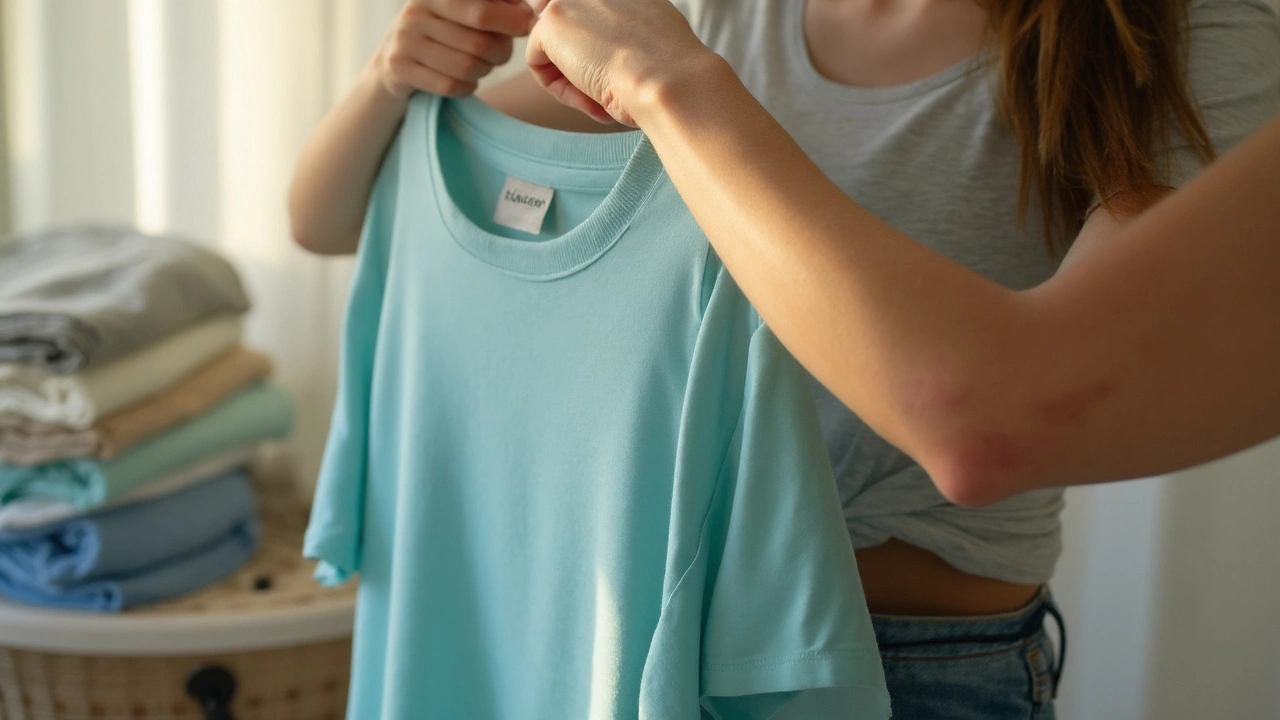Avoid Textile Allergens: Practical Tips for Safe Clothing
Ever notice a rash after putting on a new shirt or itchy skin from a sweater? Chances are the fabric is the culprit. Textile allergens are hidden in many everyday clothes and can turn a simple outfit into a skin irritant. This guide shows you how to spot the problem and keep your wardrobe allergy‑free without spending a fortune.
Common Textile Allergens
Most people think of pollen or pet dander, but fabrics can cause reactions too. Nickel is often used in metal snaps, zippers, and buttons. Latex shows up in elastic bands and some swimwear. Dyes and finishes added to make fabrics look bright can trigger itching. Wool and certain synthetics like polyester or acrylic may irritate sensitive skin. Knowing these common offenders helps you scan tags before you buy.
How to Keep Your Wardrobe Allergy‑Free
1. Pick hypoallergenic fabrics. Pure cotton, bamboo, silk, and Tencel are gentle on skin. Look for labels that say “organic” or “chemical‑free” for extra safety.
2. Test before you trust. If you’re unsure about a piece, do a quick patch test. Cut a small swatch, tape it to your inner forearm, and wait 24 hours. No redness or itching means it’s probably safe.
3. Wash new clothes before wearing. A first wash removes excess dyes and chemicals. Use fragrance‑free detergent and skip fabric softeners, which can add more irritants.
4. Choose the right fasteners. Swap out metal buttons with plastic or wood alternatives. Replace elastic waistbands with woven belts or drawstrings if you’re sensitive to latex.
5. Keep laundry simple. Wash allergic fabrics separately on a gentle cycle with cold water. Rinse twice to make sure no detergent residue stays in the fibers.
6. Protect existing garments. If you love a favorite sweater but it’s itchy, wear a thin cotton undershirt underneath. You can also spray a hypoallergenic textile spray that creates a barrier between skin and fabric.
7. Build a checklist. When shopping, ask yourself: Is the fabric natural? Are there metal snaps? Does the label mention dyes or finishes? Answering “yes” to any of these means you might need a closer look.
By watching for known allergens, choosing gentle fabrics, and giving new clothes a proper wash, you can wear what you like without the itch. Keep this list handy, and next time you shop, you’ll know exactly what to look for for an allergy‑free wardrobe.
-
24
Learn which fabrics trigger contact dermatitis, why they irritate, and how to choose safe, breathable alternatives for healthier skin.
Categories
Tags Weight
- online pharmacy
- side effects
- dietary supplement
- dosage
- online pharmacy safety
- drug interactions
- health benefits
- allergy relief
- autoimmune disease
- antibiotic
- pharmacy reviews
- affordable antidepressant
- gut health
- safe online meds
- prevention
- patient safety
- NSAIDs
- drug interaction
- medication safety
- blood thinners

